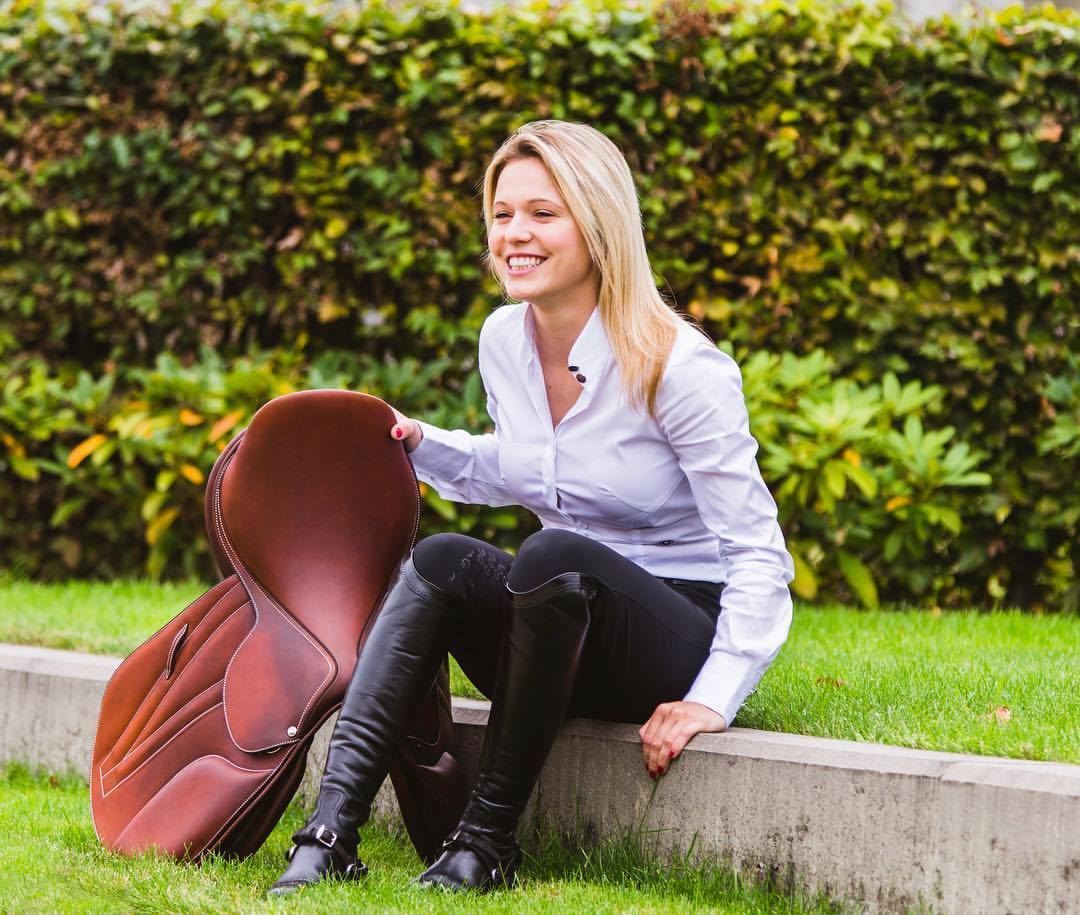A saddle serves as the pilot seat for equestrian athletes and, at the top of the sport, every detail must be geared to performance and perfection. For the Butet Saddle Company the goal is for the saddle to disappear, for the horse and rider to become one. Since 1986, when Frédéric Butet established the brand in Saumur France, all elements of the brand have revolved around this vision. Today, the core values of elegance, tradition, and performance remain steadfast pillars, and the promise to provide the best seat to the top athletes of the world is inextricably stitched into the brand.
The company, which famously produced one of the world's most expensive saddles, an all gold number, is most well known for their classic (and understated) design of vegetable-tanned supreme leather and contrasting ergonomic stitching which grips and binds the leather elements together. The overall mechanical qualities and design have remained unchanged since the brand's inception. Apart from a computer-aided design and a laser cutting table, every saddle is made using original tools and handcrafted by Butet artisans, some who have worked for the brand more than 30 years. And while truly objects of beauty in and of themselves, the fundamental purpose of a Butet saddle is to elegantly facilitate the partnership of horse and rider. Legendary equestrian clients include the likes of George Morris and Katie Prudent.
 For those wondering how long one of these handcrafted saddles takes to make, each saddle is custom designed and one order takes an average of 27 hours and a total period of 3 weeks (drying period, oiling, quality control, etc.). Because of the intensive process of design and craftsmanship, production is limited to 2200 units per year in order to maintain the standards of peak quality control. And how long do they last? There are Butet saddles still in use at 31 years of age. Talk about an investment piece.
As an equestrian athlete, practice and persistence are everything, so, the more time in the saddle, the better the athlete. Riding 8 or more horses a day is not uncommon for a professional rider, so having a perfect fit in a saddle is everything. Butet prides itself on offering over 90 design choices to their customers and offers complementary saddle fitting sessions that will define the right options for both horse and rider. Customers can choose every single detail on their saddle and accessories from exclusive stitching colors to the exact millimeters of foam thickness. Showjumping is certainly all about detail, and Butet proves its understanding of this time and again.
For those wondering how long one of these handcrafted saddles takes to make, each saddle is custom designed and one order takes an average of 27 hours and a total period of 3 weeks (drying period, oiling, quality control, etc.). Because of the intensive process of design and craftsmanship, production is limited to 2200 units per year in order to maintain the standards of peak quality control. And how long do they last? There are Butet saddles still in use at 31 years of age. Talk about an investment piece.
As an equestrian athlete, practice and persistence are everything, so, the more time in the saddle, the better the athlete. Riding 8 or more horses a day is not uncommon for a professional rider, so having a perfect fit in a saddle is everything. Butet prides itself on offering over 90 design choices to their customers and offers complementary saddle fitting sessions that will define the right options for both horse and rider. Customers can choose every single detail on their saddle and accessories from exclusive stitching colors to the exact millimeters of foam thickness. Showjumping is certainly all about detail, and Butet proves its understanding of this time and again.
Butet: The saddle for the stars
-
categories:

